Coercive Care: Southern Europe’s Reliance on Elder Restraints
Aldo Rebagliati was always good with his hands. At 30, he joined a steel company in Savona, a coastal city in northwestern Italy, helping to build components for trains and airplanes. After taking early retirement in his 50s, Aldo dedicated himself to restoring furniture, fixing old tools, and tending a plot of land where he grew tomatoes, grapes, and olive trees.
But his family started to notice changes when Aldo reached his early 70s. “He was no longer able to fix these things,” said Tania Rebagliati, his daughter. He was soon diagnosed with early-stage Alzheimer’s disease. From then on, his sense of direction faded, he lost the ability to write, and it became unsafe for him to drive or go on walks alone.
The family decided to place Aldo in a nursing home in 2019. They visited more than 10 facilities in the region of Liguria before settling on a private home called La Villa, a tall building with apricot-colored facades and views of the sea. While the cost was significant — more than $3,500 for the month — it seemed worth it.
“It almost looked like a hotel,” said Lorenzo Rebagliati, Aldo’s son. “And that’s how they sold it to us — as a place that was open in every sense. Open to visitors, open to residents who, it seemed, were free to do more or less as they pleased.”
Just three days after Aldo entered La Villa — now called L’Alba — his family says that they found him in a room with barred windows, tied to a chair with rags around his arms and waist. “I remember this as if it were yesterday,” said Tania. “We asked for an explanation, and they said it was for his own safety.” (The facility did not respond to Undark’s requests for comment.)
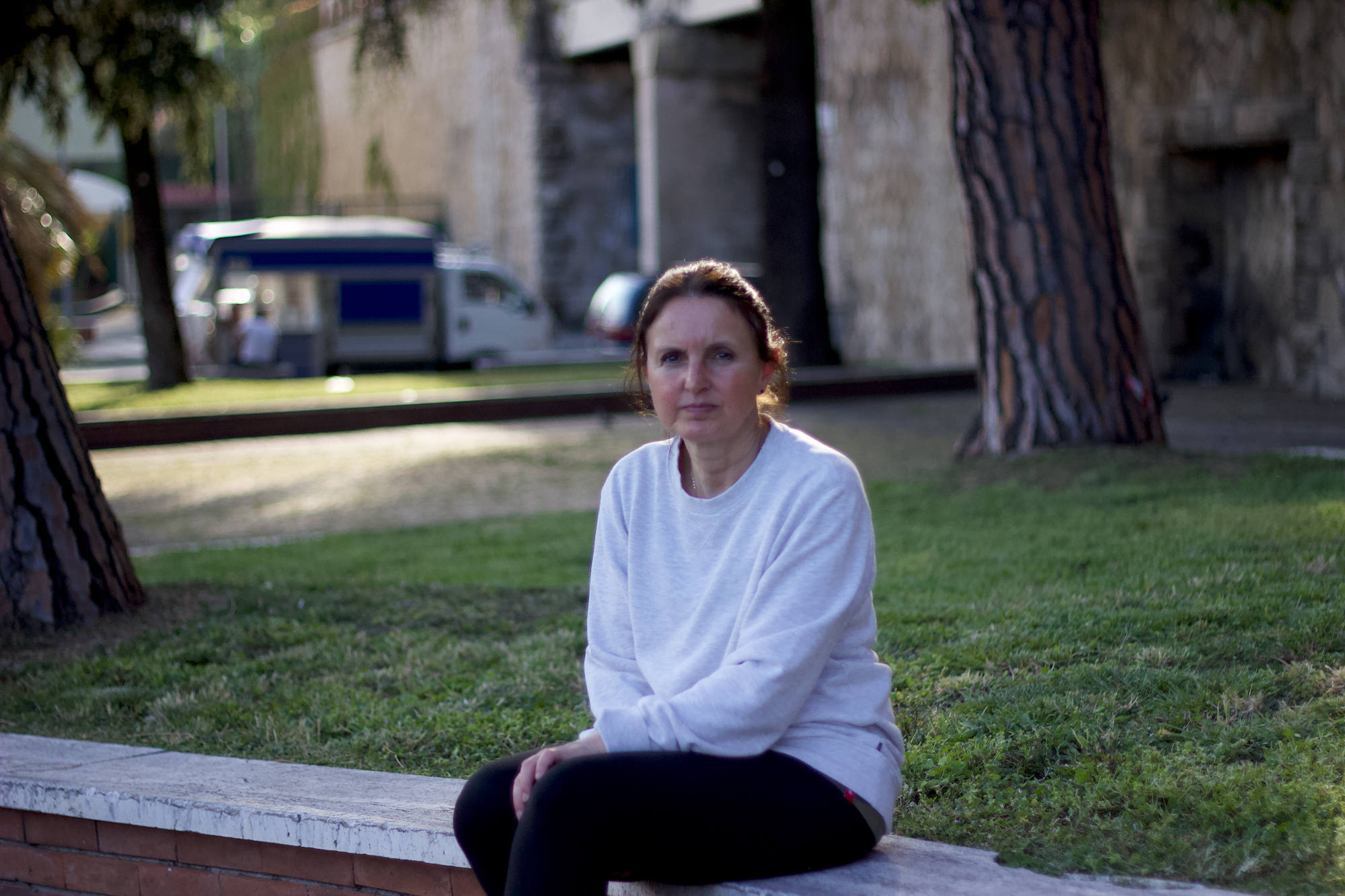
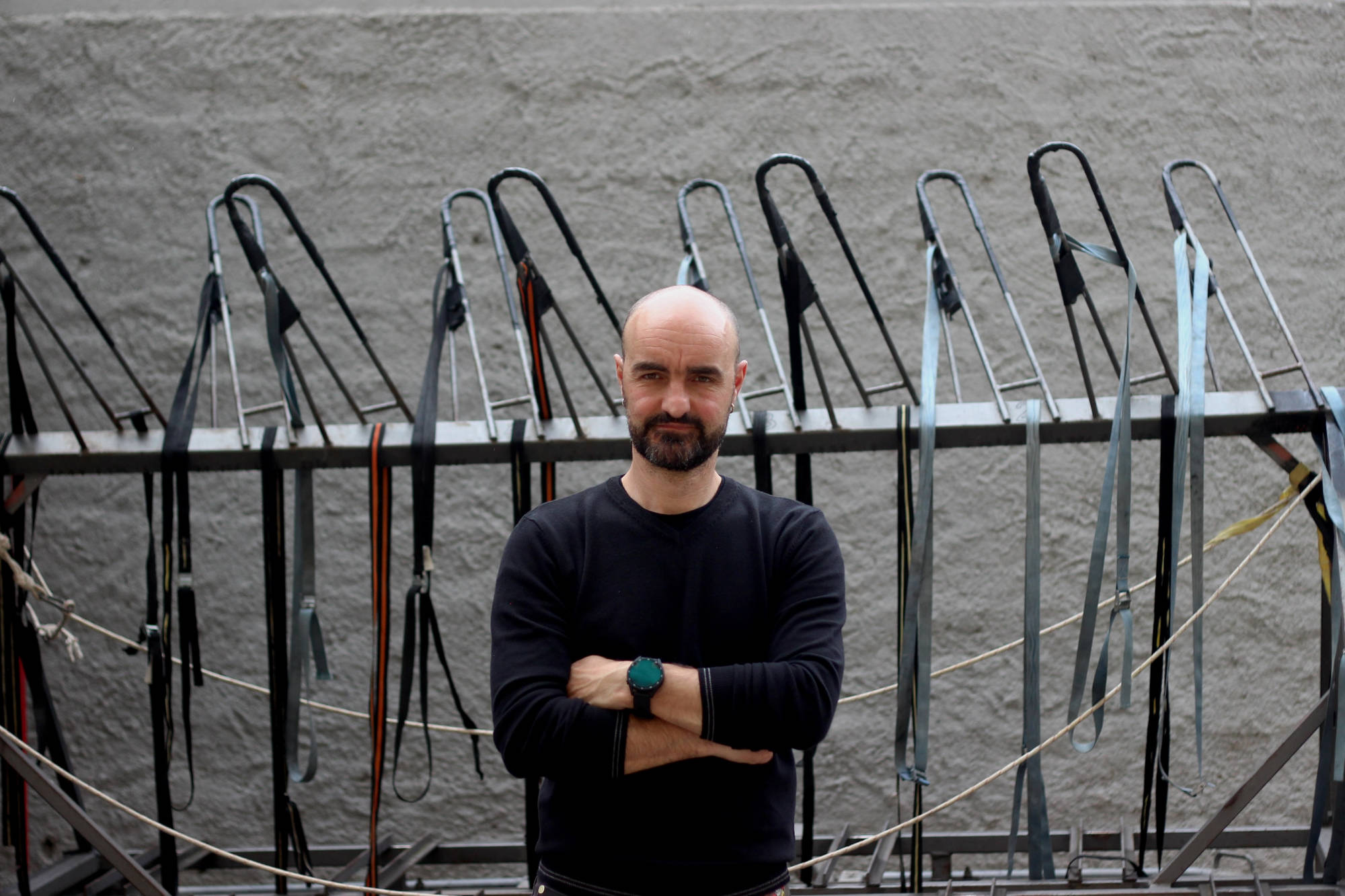
In Italy, Spain, and Portugal, the use of sheets, belts, bed rails, and other devices that limit freedom — known as physical restraints — is routine at certain facilities.
Historically, communities across southern Europe have relied on family members to take care of their elderly, but hundreds of thousands still opt for nursing homes in order to lessen the burden of caring and get specialized treatment. (In other countries, like the U.S and some parts of Australia, physical restraints are less common and chemical restraints — drugs administered to sedate patients without a therapeutic justification — are prevalent.)
Doctors and nurses who use restraints often say they are necessary to prevent elderly patients from falling, wandering, injuring themselves, or harming others. “In some cases, it is absolutely necessary,” said Dario Leosco, president of the Italian Society of Gerontology and Geriatrics. Those familiar with their use also point out that restraints are regulated by laws and guidelines that specify they should only be used as a last resort, for a limited amount of time, with consent from the patient or their legal guardian, and a doctor’s prescription.
However, a five-month investigation across Italy, Spain, and Portugal — southern European countries with rapidly aging populations and limited funding for long-term elderly care — reveals a stark gap between regulations and reality. In these countries, physical restraints are used routinely. But there is limited oversight and scarce data on the scope of their use. Some experts say that bed rails, straps, and belts can be applied without consent. And one expert noted they may be used to ease the burden of having to care for multiple patients amid staff shortages, rather than for the benefit of patients themselves. In some cases the use of such restraints has been linked to serious harm — including psychological harm, physical injury, and in rare instances, even death.
Restraining another person “infringes on fundamental rights such as freedom, as well as dignity,” said José Pascual Bueno from the Spanish association Dignitas Vitae (Latin for “Dignity of Life”), which helps nursing homes eliminate restraints.
Claudia Mahler, a United Nations Independent Expert on the enjoyment of all human rights by older persons, said that we should end the practice as much as possible. “Restraints have very negative outcomes on the people,” she said.
As people live longer and spend more time in care homes, however, “there is a risk of using physical restraints more and more,” said Sezer Kisa, a professor of global health nursing at Oslo Metropolitan University in Norway.
Restraining another person “infringes on fundamental rights such as freedom, as well as dignity.”
In Aldo’s case, Tania learned that he was also being tied to the bed at night. “My dad had become a larva in just one week,” said Tania. “He wasn’t even eating anymore.”
The family wanted to bring Aldo home but say they had to wait two weeks before being granted authorization from a doctor at La Villa. Aldo’s condition quickly deteriorated and, after a few days in the hospital, he died.
“You entrust the person you care for into the hands of someone else, thinking they’ll be safe and wanting the best for them,” said Tania. “Discovering what happened was truly painful.”
Medical professionals that use restraints cite safety concerns, such as limiting the risk of falls that can cause hip fractures and other injuries. Clinicians interviewed by Undark described difficult situations in which patients tried to remove intravenous medications or acted aggressively towards staff or fellow residents.
In one case from Barcelona, a geriatric care worker who asked to remain anonymous for fear of losing his job said a pregnant co-worker was once assaulted by a patient with advanced Alzheimer’s. “It’s a big risk,” he said.
Experts acknowledge these risks but argue that many patients with dementia act out simply because they have unmet needs — such as thirst, hunger, pain, or simply the desire to move around — and have lost the ability to express themselves. Restraints “don’t treat the underlying cause,” said Mustafa Atee, a research and practice lead at HammondCare’s Dementia Center — which provides training and information on dementia care in Australia. Last year, Atee co-authored a commentary on behalf of the International Psychogeriatric Association’s Early Career Network which expressed significant concern over the use of physical restraints in elderly people.
Medical professionals that use restraints cite safety concerns, such as limiting the risk of falls that can cause hip fractures and other injuries.
Experts add that restraints are often used to relieve the burden of workload caused by nursing staff shortages, rather than for the benefit of patients. “If you have a patient that’s difficult to watch, that might come out of bed, that might come out of a wheelchair, the simplest way from their point of view, is to restrain them,” said Steven Levin, co-founder of Levin & Perconti, a Chicago-based law firm that deals with cases related to elder abuse.
In the U.S., where Levin practices, there is a shortage of nearly 300,000 registered nurses. In Italy, that figure ranges between 65,000 and 70,000 nurses. Spain would need an additional 100,000 nurses to reach the median ratio across the European Union. And in Portugal, several thousands of nurses have reportedly left the country over the past five years in search of work elsewhere.
The evidence that restraints work to protect people is scant. “There is a total mismatch between what we already know from the science part to what is really happening in practice,” said Mahler, the UN Independent Expert.

A 2023 scientific review of 11 studies covering nearly 20,000 patients looked at different interventions to reduce the use of restraints. One of its key findings was that reducing restraints was not correlated with a higher number of falls. Moreover, while proponents say restraints reduce the risk of falls, Ralph Möhler, a professor of health services research at the Heinrich Heine University Düsseldorf in Germany, who led the review, pointed out that they may actually increase the risk of injury since restraints lead to the loss of mobility. “Nurses want to do something good, prevent injuries,” he said. But, long-term, “in fact they do something worse.”
The use of restraints also raises ethical questions about how society should treat the elderly, especially at the end of life. “By restraining them, you completely cut them off,” said Möhler. “You put them in their bed for the rest of their lives.”
Other studies have found that physical restraints may harm patients: A 2018 study of more than 400 adult patients in intensive care units found that nearly 40 percent of people restrained developed delirium — a state of sudden confusion. Patients who were restrained for six or more days were around 25 times more likely than those who were restrained for less than that time period. And a 2014 literature review found that restraints negatively impacted psychological well-being and appear to be a significant risk factor for future health problems. Another review suggested physical restraints may be associated with patients developing PTSD.
A 2011 guideline from Italy’s own Ministry of Health also states that “there is no scientific evidence” supporting the claim that physical restraints keep patients from falling, and notes they can cause “adverse psychological and physical effects.”
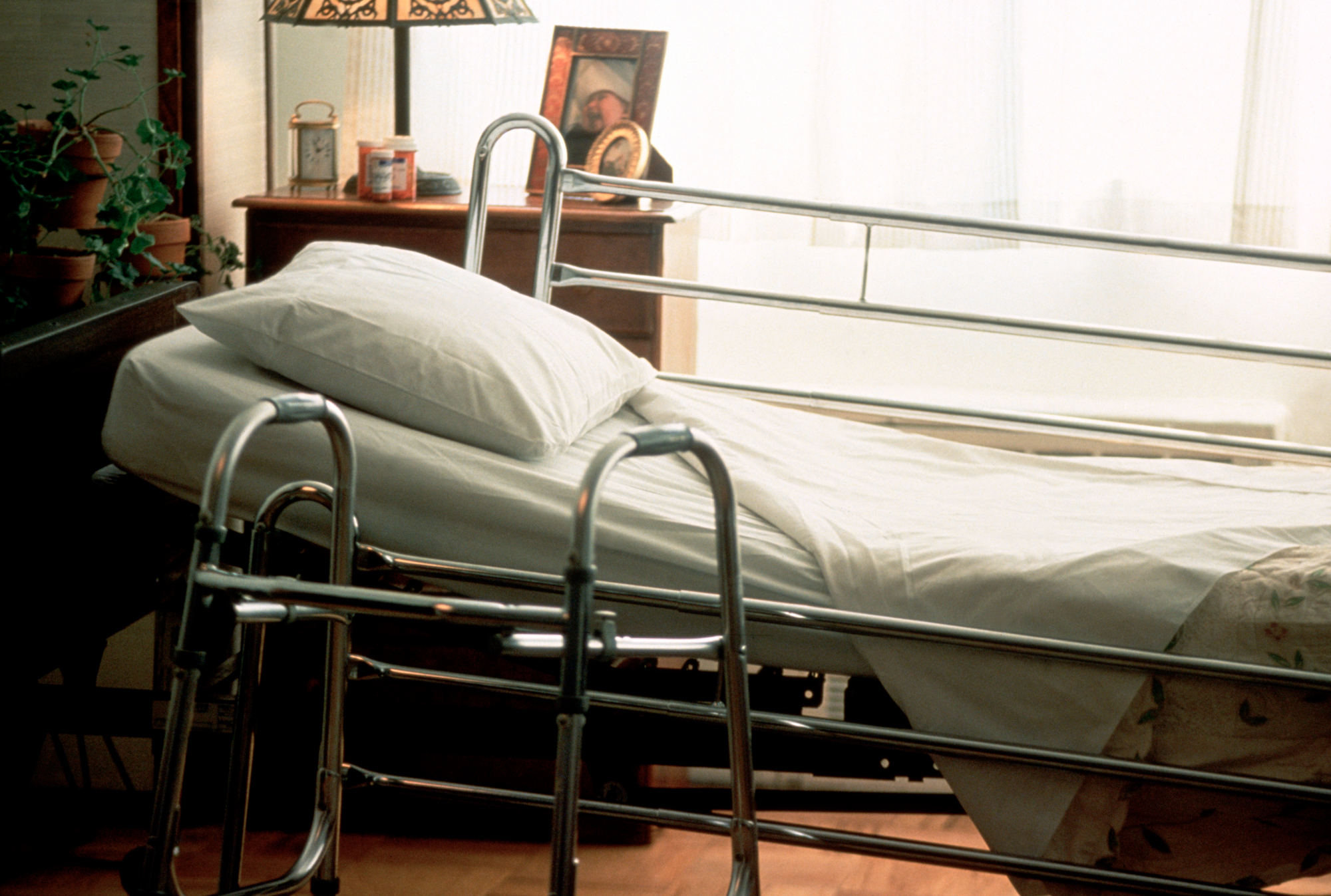
Even the restraints that some consider to be the most benign — bed rails — can cause problems. Multiple experts told Undark that patients sometimes try to climb over bed rails, which may actually increase the risk, and severity, of falls and fractures. “If you get out over bed rails, you’re going to fall from a greater height,” said Shaun O’Keeffe, geriatrician at Galway University Hospital in Ireland.
And bed rails may not have much benefit, according to research. A 2012 review that examined the efficacy of different kinds of restraints — including belts tied to a chair or bed rails — at reducing falls or injuries concluded that they didn’t keep patients safe, and noted dozens of deaths caused by patients becoming entrapped. Levin’s law firm has dealt with several cases “where people would suffocate between the bed rails and the mattress,” he said, adding later: “We’ve had some horrific cases.”
In Europe, restraints are regulated by a combination of guidelines, ethical codes, and recommendations by medical and legal organizations aimed at minimizing their use on elderly people.
Italy’s national bioethics committee, for example, stated in 2015 that physical restraints should be used as a last resort and that “it is not sufficient for the patient to be in a mere state of agitation.” Similarly, the country’s nursing code of ethics states that “restraint is not a therapeutic act” and that it has “exclusively a precautionary character of an exceptional and temporary nature.”
In Spain, there is no specific national law regulating restraints, but a 2022 directive from the attorney general instructs public prosecutors to control and restrict the use of restraints, including ensuring they have been consented to and prescribed by a doctor.
And in Portugal, a law on the rights of people nearing the end of their lives, as well as national health guidelines, encourage the cautious use of restraints. The law states that the use of restraints should be “exceptional, not prolonged and depend on medical prescription” and a team accompanying the patient.
Averardo Orta, president of the European Confederation of Care Homes Organizations, which represents private nursing homes across Europe, says that restraints are a sensitive issue and that in Europe there is a desire to minimize their use as much as possible. The use of restraints “is extremely controlled and only in cases of real need and for the strictly necessary time,” Orta said.
However, in practice, the use of restraints doesn’t always follow a country’s guidelines or regulations. In Italy, Undark identified more than a dozen facilities accused of elderly abuse; local news reported patients in care homes and hospitals were tied with belts, bedsheets, and straps. In one 2022 case in Palermo, Sicily, patients were tied to beds or wheelchairs for hours, sometimes beaten or verbally abused. A similar case occurred in Turin in 2017.
Cases have also emerged in Spain. Two years ago, Joana Ruiz Murillo’s late mother, who suffered from late-stage Alzheimer’s disease, was temporarily admitted to a care home in Barcelona, as she was becoming increasingly agitated. “When I arrived in the morning, I would find her tied by her hands and feet,” she told Undark, adding that she couldn’t handle seeing her mother like that and that she considered it mistreatment. After two weeks, she and her sister managed to bring their mother home to be looked after by a caretaker instead.
In Portugal, a woman named Urbana Maria Bolota Cordeiro testified to Parliament in 2012 that her 95-year old father had been tied up in a hospital, ultimately causing food to block his airways, leading to his death. A nurse later admitted to Cordeiro that the hospital routinely restrained patients for fear they might fall, according to the petition.
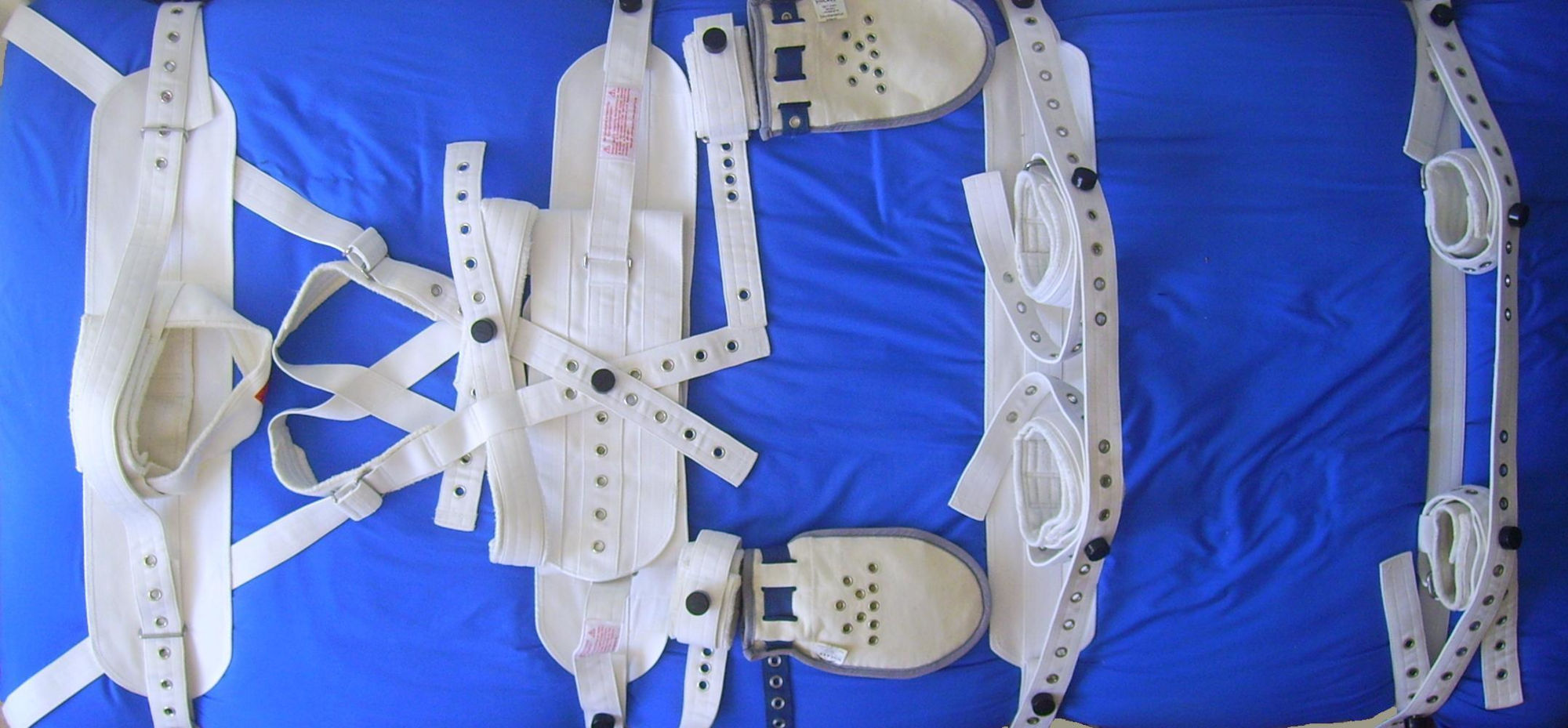
In all three countries, official requests for information revealed missing or fragmented data on the use of physical restraints. Where figures do exist, they point to routine rather than exceptional use. In 2023, in Lombardy, Italy — which has roughly 66,000 nursing home beds — around 42,000 patients were subjected to at least one form of restraint, although the response to the information request did not provide a breakdown on specific types of restraints. As of January 2024, in Trentino, there were about 4,900 beds; during the previous year, nearly 4,200 residents were prescribed some form of physical restraint, mostly identified as bedrails. The data also reported on cases involving multiple restraints, though did not specify what kind. And in Piedmont, another region in northern Italy, a 2019 report from the regional government included results from a survey of 430 nursing home facilities, which found that 94 percent used some type of physical restraints; 88 percent of respondents reported using bed rails, while 61 percent reported using an unspecified tool for bed restraint. “These are results that, unfortunately, confirm a situation of widespread use of coercive practices on individuals in residential facilities and nursing homes for the elderly in Piedmont,” the report concluded.
In Spain, information requests also showed fragmented data on the use of restraints, with limited details on the types of restraints used. In some cases, inspection reports are still handwritten. There’s also lack of transparency and the administrations responsible for care in nursing homes in each autonomous community don’t want to publish data on restraint prevalence rates despite collecting it during inspections, explained Antonio Andrés Burgueño Torijano, the medical director of a program to eliminate restraints at the Spanish Confederation of Organizations for the Elderly (also known as CEOMA, based on its acronym in Spanish). He estimates that about 17 percent of Spanish nursing home residents — mostly those with dementia — are subject to restraints.
The Spanish region of Navarra was the first autonomous community to regulate against the use of physical restraints in 2011. According to data obtained via an information request, which only covered 2022 to 2024, the use of restraints appears to have decreased by more than half over that time period. However, last year, about 40 percent of nursing homes and care facilities for which data was made available received some sort of warning from inspectors, ranging from the need to draft a plan for the removal of restraints to lack of consent.
In the Canary Islands, an autonomous community of Spain, a 2017 study found that around 85 percent of residents in nine long-term care centers were periodically restrained. Another study with several of the same researchers found that around 80 percent of restraint cases did not involve informed consent and almost 70 percent had no medical prescription. “Failure to produce this documentation contravenes the law,” the study concluded.
In all three countries, official requests for information revealed missing or fragmented data on the use of physical restraints. Where figures do exist, they point to routine rather than exceptional use.
In Portugal, the Directorate-General of Health, an organization that falls under the country’s health ministry, claimed to have a national and anonymized registration of physical restraint cases in 2007. But in response to a request for data, the organization stated via email that they were not aware of the existence of this data, nor of any official nationwide study on this topic, either on its own initiative or by another entity.
However, João Pärtel Araújo, chief operating officer of Humanitude International — an association that provides training and consulting to nursing homes — said that among the last 11 institutions he worked with, there was an average prevalence of around 63.5 percent of physical restraints.
Experts working in the country, though, say that physical restraints are used routinely in Portugal.
“Given the rapid aging of the population in Portugal and the projected increase in the incidence of dementia in the coming decades, it becomes even more urgent to address this issue seriously, professionally and ethically,” said André Rodrigues, medical coordinator for residences with Emeis in Portugal — formerly called Orpea — a multinational nursing home provider. One effort to address the issue came in June of 2024, when nurse Carmen Garcia launched a petition that has gathered more than 12,000 signatures seeking to ban the use of physical restraints on the elderly, except in extreme situations and where all other alternatives have been exhausted.
“What would a parent think if they arrived at a school and saw their child, who had just started taking his first steps and was at high risk of falling, tied up?” asked Garcia. “No one would let this happen. However, we continue to think it’s normal to physically restrain the elderly under the guise of thinking we know what is good for them.”
Only a fraction of people subjected to restraints will die — more common are lesions, loss of muscle tone, ulcers, or increased agitation.
But some of the most invasive types of restraints such as abdominal straps have led to fatal incidents.
Around 2012 in Santander, Spain, Luís Carlos Quintero Uribe, a forensic doctor and head of the Institute of Legal Medicine of Cantabria, under the country’s Ministry of Justice, started noticing a pattern: elderly people from local nursing homes appearing to have died from waist restraints. Consulting with his colleagues, he soon realized that there were many other bodies, about 8 to 10 per year, dying in the same way, all in the region of Cantabria in northern Spain.
After investigating, he learned that nurses using abdominal restraints weren’t using lateral straps that prevent sideways movement. “These people were gradually turning and shifting to one side of the bed, and then they would fall,” he told Undark. “That’s when the asphyxiation occurred.” Once corrected, those deaths dropped to one every five years.
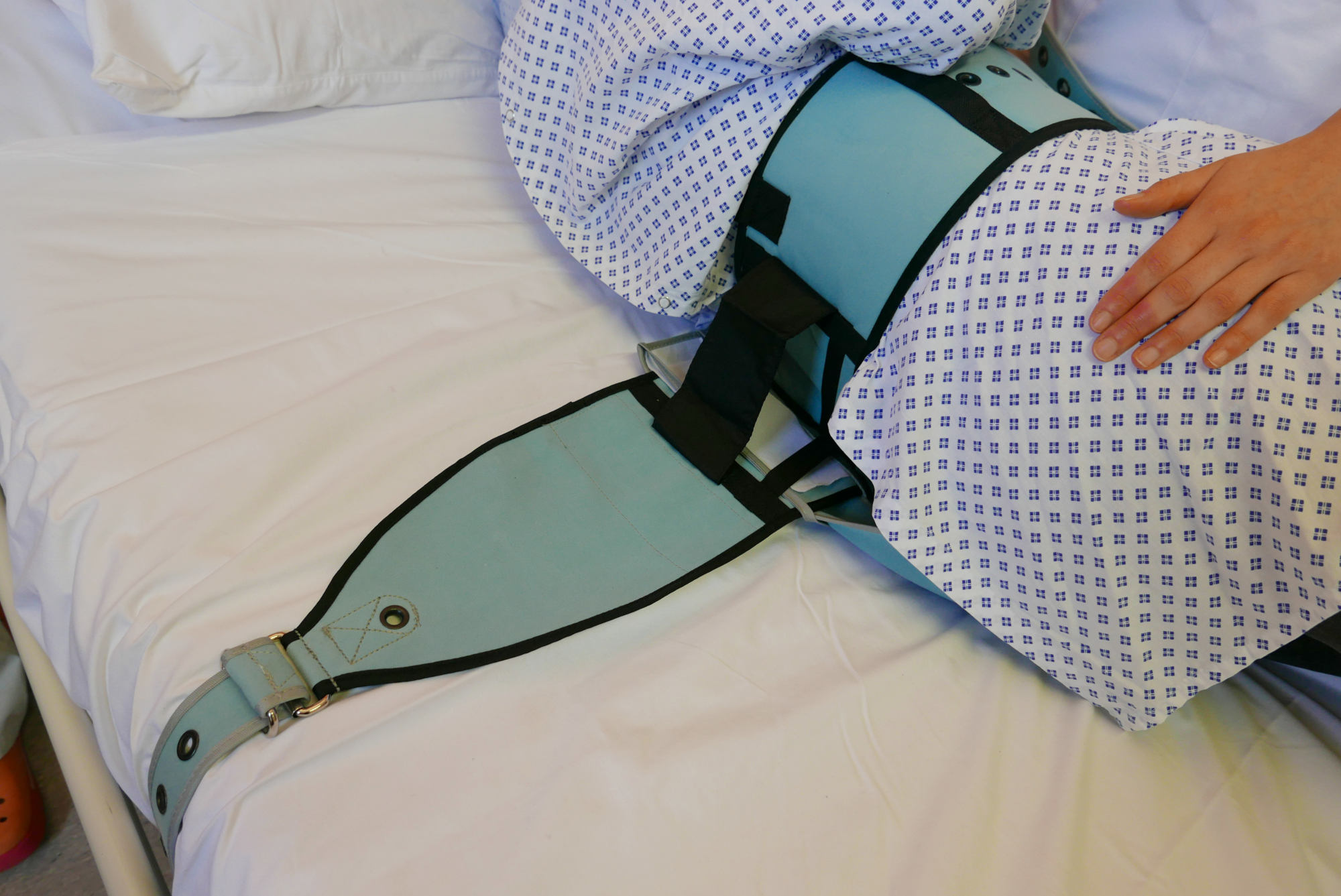
Uribe and his colleagues documented two of these deaths in a scientific paper published in 2012, but to the best of his knowledge, the rest never went public. More recently, in 2022, an elderly woman with Alzheimer’s suffocated due to straps used to secure her to her bed at a nursing home near Madrid, according to a news report.
Another example includes a 2020 Portuguese court case where a 75-year-old woman was immobilized with a bedsheet and died of strangulation. “The victim then slid sideways off the bed until, unable to change position, she ended up trapped, with the band around her neck, which slowly compressed her, causing her to suffocate until she died,” the court document reads.
Because of these risks, Livia Bicego, now retired but formerly a director of nursing at regional public health agencies, says authorities should ban restraints altogether rather than strive to minimize their use. “It’s like a gun,” she said “If you have one, at some point, you will be destined to use it.”
Patient advocates say the root of the problem, at least in southern Europe, lies in a cultural belief that health care workers always know best. “That’s the paternalistic model,” said Leire Cosgaya Fernandez, a change management consultant and head of social and internationalization projects for Fundación Cuidados Dignos — or Dignified Care Foundation — which promotes restraint-free care in Spain.
Others cite the quality and education of staff. In Portugal, a survey of 250 nurses found that more than half were unaware of the national guidelines on restraints, which place strict limitations on them. Few had received specific training. “This protocol exists, but the professionals don’t know it exists,” said José Carreira, president of the Stop Ageism Association and Obras Sociales Viseu (Social Works of Viseu).
“It’s like a gun. If you have one, at some point, you will be destined to use it.”
For this reason, some organizations, including CEOMA and Fundación Cuidados Dignos in Spain, have initiated certification programs that train staff on restraint-free care.
In Italy, legal ambiguity compounds the issue. While the constitution protects personal freedom, health care workers can be held criminally liable if they fail to prevent injury, said Alba Malara, president of the Anaste Humanitas Foundation, who carry out research and training on behalf of Anaste, an association that represents 12,500 bed spaces in private nursing homes across the country. “If all precautions are not taken — including possibly also restraint when necessary — at that point they may be in violation of the law in the opposite sense.”
Meanwhile, some experts suggest using alternatives to physical restraints by focusing on personalized care such as music therapy, physical exercise, engaging patients in activities, and socialization.
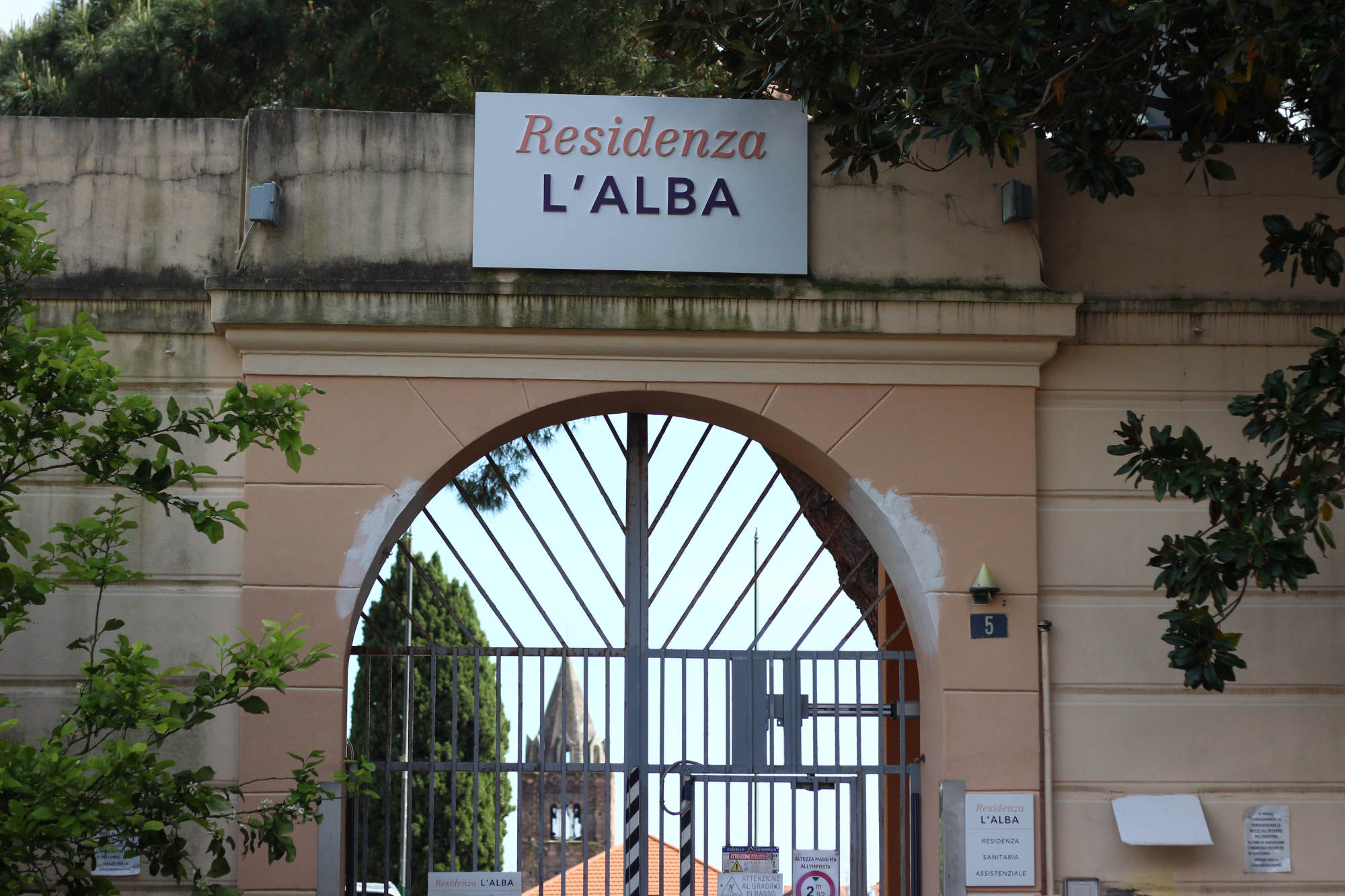
In Trieste, in Italy, Bicego said they are trying to move away from restraints in care homes, but new abuse cases continue to emerge across the country. These are typically addressed on a case-by-case basis by law enforcement and the courts. One such case involves La Villa, now called L’Alba, where Aldo was a resident. Several workers were accused of mistreatment of other elderly people in the residence, and a court hearing took place just last May.
Undark filed a public records request to the region of Liguria, asking for data on L’Alba’s use of physical restraints on residents over the past 5 years. Local health authorities responded that they do not systematically collect such data from privately run facility and therefore “do not possess the data requested.”
“It’s like washing your face a little and starting over,” said Aldo’s daughter Tania. “I hope they don’t go back to doing the things they used to do.”
Note: Numerous interviews for this story were conducted originally in Italian, Portuguese, and Spanish, and subsequently translated to English. Other versions of this investigation were published at L’Espresso, elDiario, and Expresso.
Jonathan Moens is a science and investigative journalist based in Rome. His work has appeared in The New York Times, National Geographic, and The Atlantic, among other publications.
Natalie Donback is a freelance journalist based in Barcelona, where she covers climate change, global health, and the impact of technology on communities. Her work has been published in TIME Magazine, The Guardian, Grist, Hyphen, Rest of World, the BBC and many other outlets.
Joana Ascensão is a journalist based in Porto, Portugal. Her reporting focuses on social issues, such as inequalities, global health, LGBT and women’s rights, among other topics. Currently she works for the newspaper Expresso.










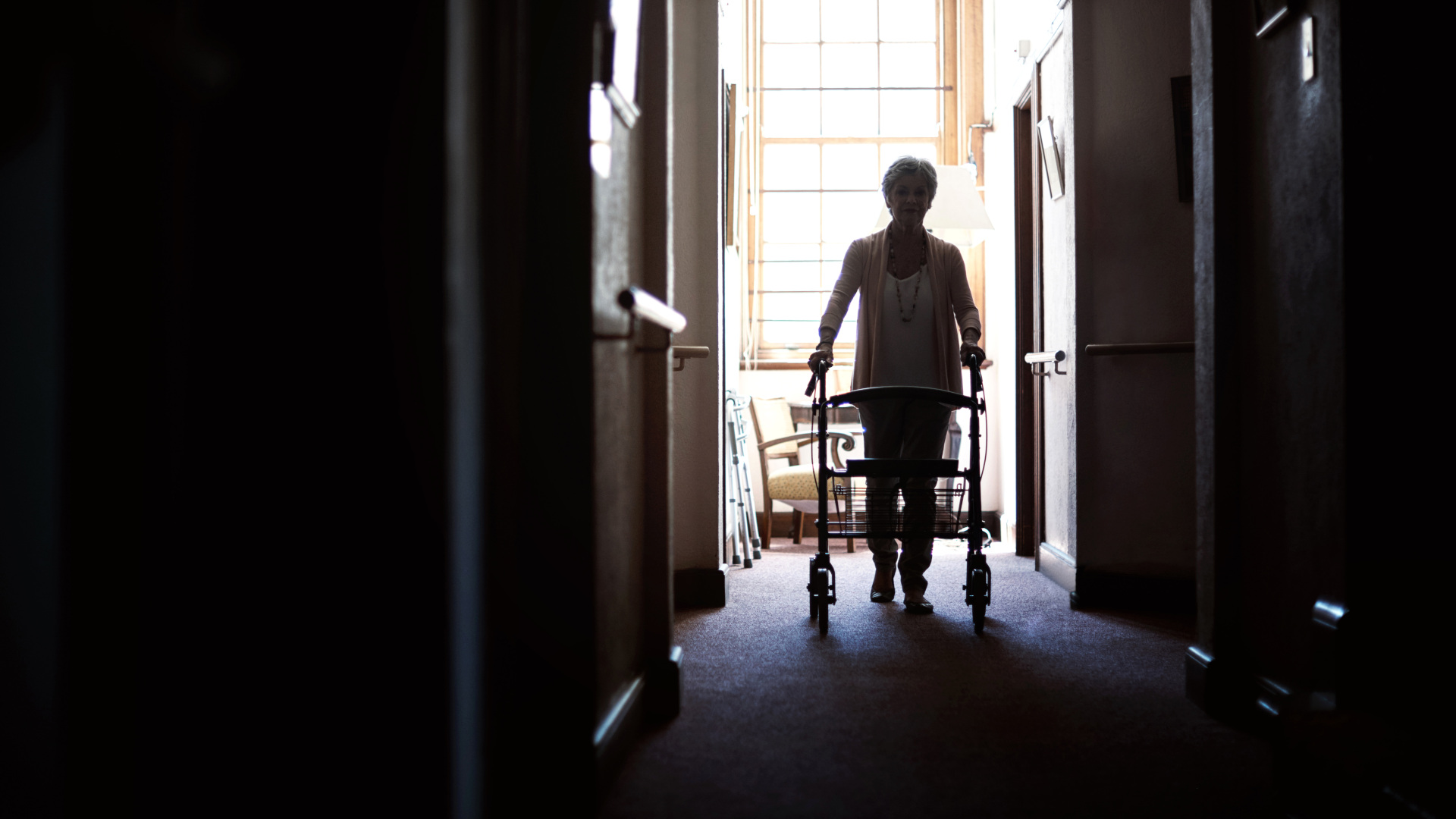
 The production of this investigation is supported in part by a grant from the
The production of this investigation is supported in part by a grant from the 

It would have been helpful to include descriptions of programs being implemented with successful alternatives to restraints. Also to describe any costs associated with these alternatives–such as manpower, infrastructure, family involvement changes required. Are there programs to help families keep their loved ones home–caregiver support?–so that institutionalization is avoided?